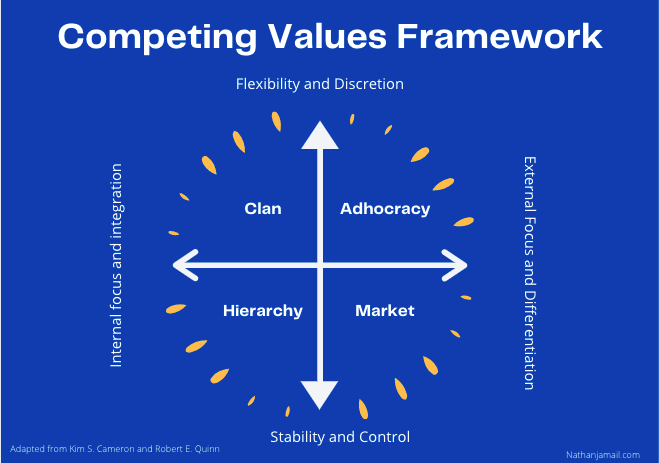“A thriving corporate culture is achieved when all employees understand and believe in the cultural principles of the group. It is the leader’s job to ensure all employees are doing their part to help the culture thrive.”
-Nathan Jamail
Understanding corporate culture builds the necessary framework to create a thriving organization. It defines the attitudes and shared values needed for all employees to meet the company’s goals and vision. Without a firm grasp of your company’s corporate culture, well, your employees would operate like a football team without the season’s playbook.
Here at Jamail Development Group, our goal is to help your organization become a winning team. Today we’ll take a look at the four types of corporate cultures that can positively shape your company.
What is Corporate Culture and why is it important?
First, let’s take a moment to define what culture is in the corporate setting. According to an article in Harvard Business Review, culture looks at the social order of an organization inclusive of its ability to shapes attitudes, behaviour and cultural norms.
These norms define what is acceptable or unacceptable within an organization. Therefore, personal values, needs and goals among staff and leadership must marry to attain a company’s shared vision.
Let us go back to our reference to a successful sports team so we can examine why corporate culture is key.
All sports teams focus on one main goal, winning. This means an individual player’s intrinsic goal is to be the best in their position and compete for the best team in their league. These lofty goals requires a team to operate with a shared value of winning and being best in class.
The corporate culture paradigm for your organization will be dependent on the business industry, goals and leadership styles. Let us first take a moment to identify the four corporate cultures.
What are the four types of corporate culture?
In 1983, Robert Quinn and John Rohrbaugh created the useful Competing Values Framework to perform cultural assessments in companies. From their research, they were able identify four types of corporate culture, clan, hierarchy, adhocracy and marketing. Let’s take a look at each culture.

Clan Culture
Similarly to the clans of yore, leaders in clan culture are usually viewed through a parental lens. Despite the presence of rules, staff within this culture tends to operate largely informal. Correspondently, acute socialization between leadership and staff plays a key role in building strong bonds within the group.
Clan culture utilizes a flat organizational structure, therefore tasks are performed autonomously and collaboratively. Moreover, staff and leadership practice a familial structure and build strong inter-personal relationships within the group.
Clan culture key tenets:
- Loyalty
- Collaborative
- Traditional
- Familial leadership
Adhocracy Culture
Adhocracy culture is classified as having a highly competitive nature and is typically practiced by companies that are innovators within their industry. Essentially, this culture demands that a business constantly evolve in order to maintain its position as a market leader. Additionally, it must be dynamic enough to keep up with the constant challenges to stay ahead of their competitors.
Naturally, leadership within the adhocracy culture is often a potent mix of innovation, vision and the ability to lead teams through high-risk operations. Subsequently, senior executives and managers typically encourage their staff to be free thinkers who are capable of challenging the status quo.
Adhocracy culture key tenets:
- Dynamic
- Innovative
- Visionary leadership
- High-risk
Market Culture
Market culture is a highly competitive environment where staff competes even within the organization’s bubble. Leaders a part of this culture are viewed as taskmasters and are notably result-oriented. This means they are motivated by high profitability and are intent on capturing the largest market share in their respective industries. Above all, the overwhelming attitude in this sphere is that the company must yield the most profitable results.
Two prominent market culture leaders are Amazon’s Jeff Bezos and Apple’s Steve Jobs.
Market culture key tenets:
- Competitive
- Transactional
- Result-oriented
- Taskmaster leadership
Hierarchy Culture
In a hierarchy culture, norms are often rigid and there is a clear distinction of roles within the organizational structure. This environment is easily identifiable as leadership and staff practice a relationship that follows a strict chain of command.
The cultural standards within these entities are highly bureaucratic as they tend to operate in heavily regulated industries. The goal for all employees is to keep mistakes and operational costs low. Two prominent examples are the FBI, key players in the national security industry and the FDA, health industry operators.
This type of organization culture calls for leaders who are meticulous, process-driven and procedurally-oriented.
Hierarchy culture key tenets:
- Rigid
- Meticulous
- Procedurally-oriented
- Bureaucratic leadership
Where you able to identify which cultural norm best describes your organization? We can help you to identify, understand and adapt winning cultural principles in your company. Learn how we can achieve this here!






